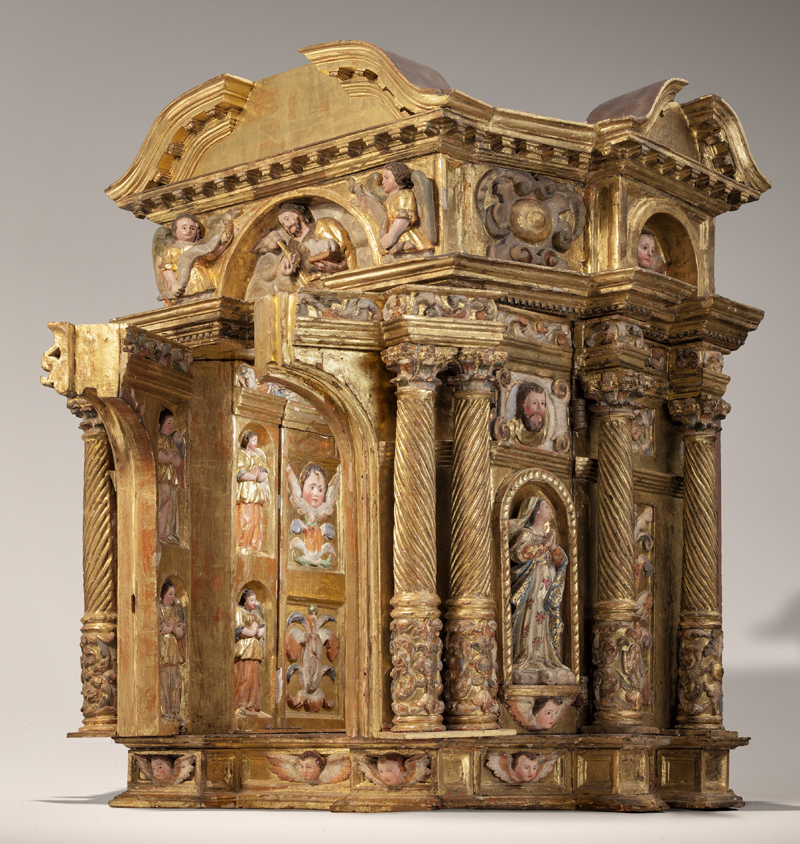University Art Museum celebrates 50 years
Fall exhibition features 50 highlights through the years

From a Neolithic Chinese vessel to 20th-century paintings, the Binghamton University Art Museum’s fall exhibition will celebrate a half-century of acquiring objects for the permanent collection.
The Main Gallery exhibition, “50 Years/50 Highlights,” opens Sept. 15 with a gala reception from 5-7 p.m. The exhibition runs through Dec. 17.
University Art Museum Director Diane Butler called the exhibition “a group effort” that received assistance from faculty and staff members.
“I met with many colleagues in art history, classics and history to look at our collection,” she said. “They cast their eyes on the objects within their areas of expertise and advised me on what they saw as the highlights.”
By the end of 2016, Butler and her advisers came up with 50 objects to spotlight, including prints from Rembrandt and Picasso, a Buddhist temple painting and an early Corinthian perfume vase from the 6th century. Forty-nine of the objects will be laid out chronologically in the Art Museum (the 50th object – the Henry Moore “Reclining Figure on a Pedestal” sculpture – is nearby in the Memorial Courtyard).
Faculty members Nathanael Andrade, Karen-edis Barzman, Hilary Becker, Jeffrey Becker, Howard Brown, Kevin Hatch, Tom McDonough, John Tagg, Nancy Um, Julia Walker and Andrew Walkling all contributed entries for the objects in an exhibition catalog designed by Blazo Kovacevic, assistant professor of art.
“I wanted them to feel free to tell their own personal tales about how the objects inspired them,” Butler said about the faculty entries.
The 80-page catalog, which will be for sale at the exhibition, also includes a history of the Art Museum written by Butler and photos of the museum from 1967 and 2017. Each of the 50 highlights is shown in color and receives at least a page entry.
Some of the objects are making rare appearances in the exhibition, Butler said. A late 17th-century tabernacle, in fact, has never been exhibited. The 39-inch high tabernacle is made of gilded and polychromed wood and was gifted to the Art Museum in 1978.
“It was a challenge for us,” Butler said. “We have had a special base made for it and had some restoration work done on it.”
Another rarity on display is a 14th-century cruciform panel. Purchased by the Art Museum in 1968, its delicate nature makes it difficult to install, Butler said.
The museum’s earliest purchases with state funds, such as the Moore sculpture and paintings by Ambrosius Bosschaert, resonate with Butler, who said she is impressed by the ambitious nature of the museum’s origins. Kenneth Lindsay, an art history professor, and Michael Milkovich, the first museum director, recognized the importance of teaching with objects in a permanent collection.
“The rationale was that if a chemistry department needed a lab and supplies to teach, then a ‘lab and supplies’ – a permanent collection – was needed to teach art,” Butler said. “It was a revolutionary approach to understanding how art history is taught.”
Lindsay, whose vision helped bring an art museum to campus, will be honored in the Kenneth C. Lindsay Study Room with a briefly installed exhibit called “While Waiting for Supper.” The exhibit features 25 matted drawings and sketches from Lindsay.
“He literally made these doodles while waiting for supper,” Butler said. “I thought they were delightful.”
Fifty years after opening in October 1967, the Binghamton University Art Museum now has more than 3,500 pieces of art and three levels, including four lower galleries and the study room on the first floor.
Although the museum offers an iPad tablet tour, Butler said she hopes that object study will still be an essential part of the museum experience over the next 50 years.
“I think objects are so important that you shouldn’t be trying to understand a Renaissance painting by looking at one on your phone,” she said. “You should look at the real thing. Something magical happens when you see an object that is hundreds of years old.
“I hope when we celebrate our 100th anniversary that we’ll not only find new and interesting ways to make object study important and relevant, but that object study will remain a central focus of the museum.”

